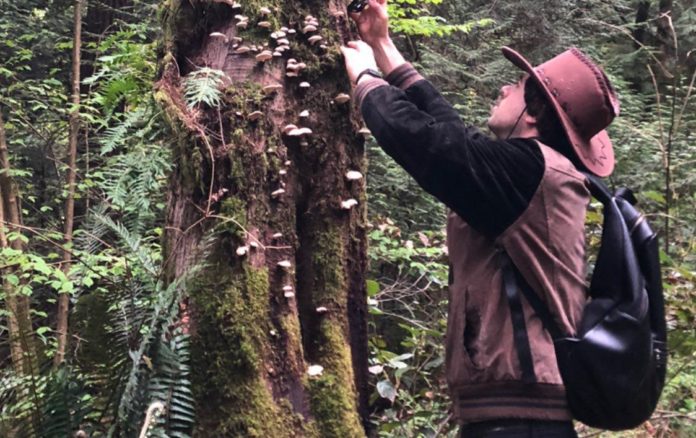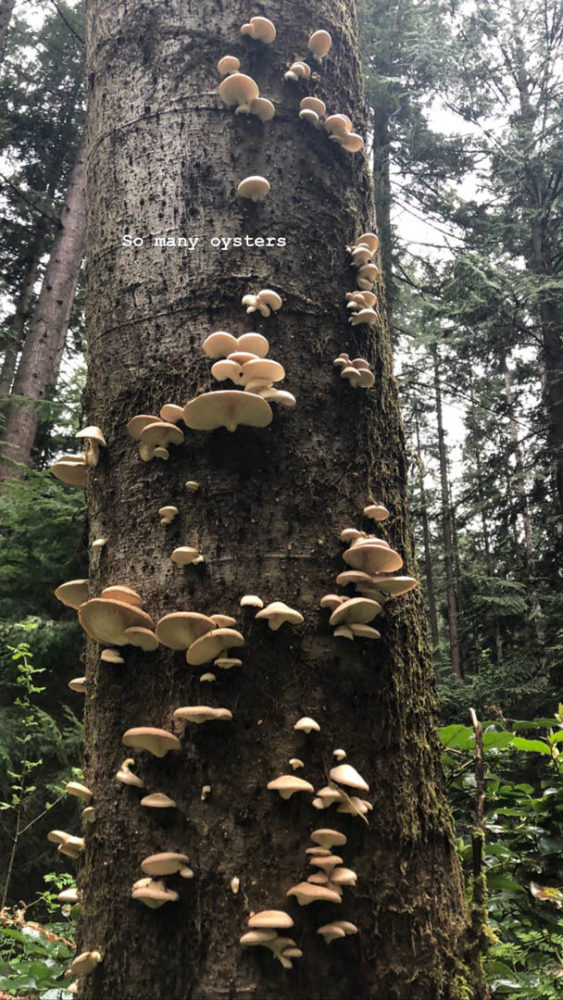 I recently got the opportunity to wander through Pacific Spirit Park in Vancouver with Alex Ross, an amateur mycologist known on Instagram as Shroom Daddy, who agreed to teach me the ropes of foraging — a passion he has been feeding since 2018. Just a few steps onto the trail and we had the first oyster sighting of the season. Clumps of fresh oyster mushrooms were growing on a fallen log.
I recently got the opportunity to wander through Pacific Spirit Park in Vancouver with Alex Ross, an amateur mycologist known on Instagram as Shroom Daddy, who agreed to teach me the ropes of foraging — a passion he has been feeding since 2018. Just a few steps onto the trail and we had the first oyster sighting of the season. Clumps of fresh oyster mushrooms were growing on a fallen log.
What do you use to collect mushrooms?
When I was up on the trail the other day, I brought paper bags, but I also used a skunk cabbage leaf, which is a very large leaf you can use to collect things — it’s very durable and strong. We’ll probably find some skunk cabbage, but let’s just take a few of these and put it in our paper bag. We finally got the rain, so the oysters are just popping now.
After snapping a few pictures, Ross collected a few of the oysters from the log after taking in a deep whiff of their gills.
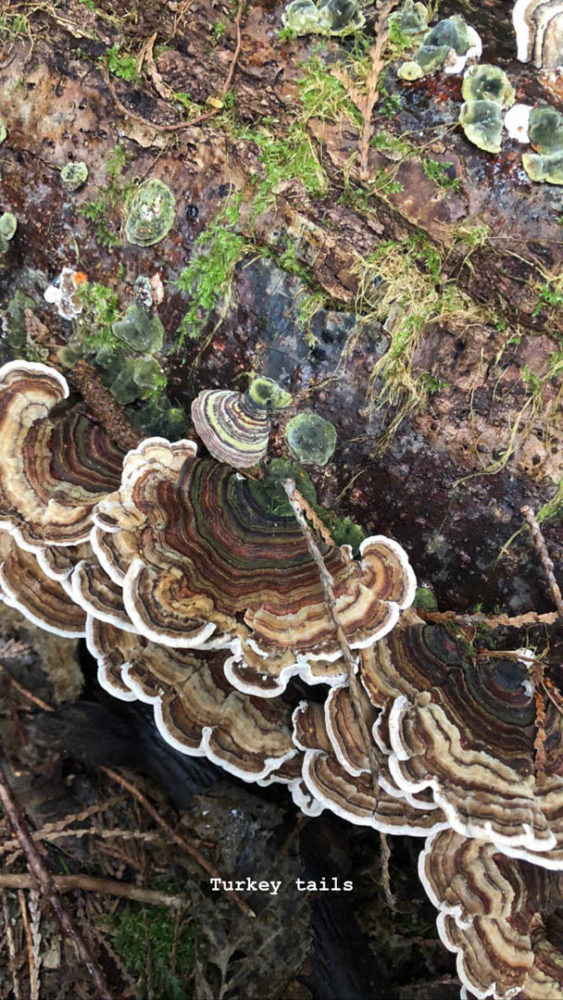 How would someone grow a mushroom log if they wanted to grow mushrooms at home?
How would someone grow a mushroom log if they wanted to grow mushrooms at home?
You would take a log like this from a fallen tree, ideally within two or three months of it falling — you wouldn’t want to wait longer than that. You can also buy some already myceliated wooden dowels, also called plug spawns. Then, you can use a drill to drill holes into the log, after that you would hammer the wooden dowels into the holes, then the mycelium would colonize the log. You also want to cover the holes with wax so that no other things can get in there.
Alternatively, you can grow mushrooms in a smaller space using a grow bag.
Is it legal to forage here?
Ah, no. But, we’re not taking a huge-ass haul and making a profit off of it; I’m just harvesting for my own use, you know, for eating.
Mushroom foraging is prohibited in national parks, provincial parks, regional parks, ecological reserves, and recreational areas and trails in British Columbia. Mushroom picking is allowed on privately owned land and leased Crown land after obtaining permission. One can harvest mushrooms freely on provincial forest Crown lands, which are essentially non-existent in the Lower Mainland, making foraging for food a prohibited activity for city dwellers.
We walked through the forest with Ross pointing out edible or medicinal plants he saw just off trail, like huckleberry bushes, the Oregon grape, or elderflowers.
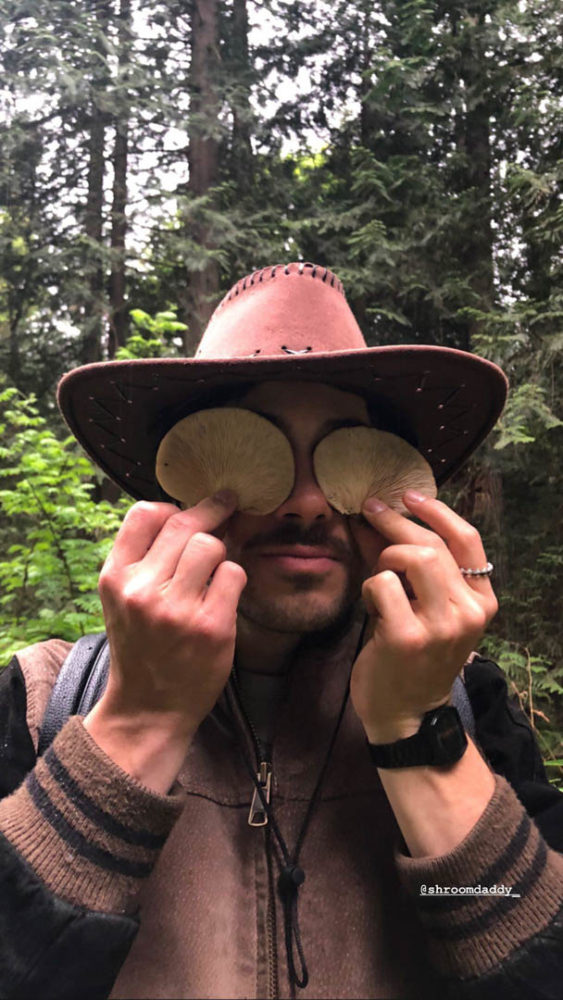 Where do you learn about foraging?
Where do you learn about foraging?
Books. I wouldn’t say I was an avid reader, but you can learn a lot from just going out, taking pictures and trying to identify different plants. Plants of Coastal British Columbia is a common book that all the forestry students have at UBC and SFU — this is kind of their go-to book. It has a lot of ethnobotanical resources too. So, it tells you a lot about how different Indigenous groups from around here used these plants. A lot of the knowledge that I am telling you today is stuff that I’ve gathered from that book, but it’s good to have a variety of resources too. You can learn from word-of-mouth from other people, online resources, and different books.
Did this passion start with you learning about mushrooms?
Yeah, it just started in the North Delta watershed. I was quite depressed and just walking around the forest and seeing all these different mushrooms around. It must’ve been fall because there were just mushrooms everywhere. I was just thinking, “Oh, I wonder if any of these are psychedelic?” So, that got me interested in identification, because I got onto these online forums and I was trying to identify these mushrooms and all these mushroom nerds on the internet were identifying my pics in less than a few hours. I was using this one website called Mushroom Observer. I started learning more about fungi and plant biology, and these relationships with the plants and the trees, then I got interested in trees.
I like to see all the practical uses of plants, this ancient knowledge that has been around forever, but a lot of us don’t even know about. All these medicines that have been used for thousands and thousands of years, but people have never heard of. This is just how it’s been, but we in western society only know what the doctors tell us. But, there is actually a lot you can heal right out here, in the forest, in Vancouver, British Columbia.
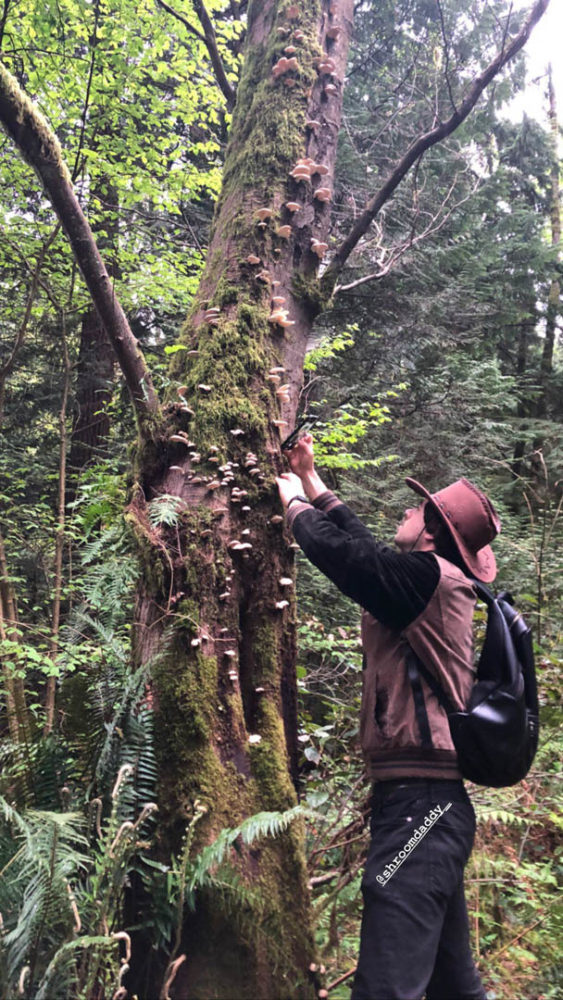 Have you foraged anything to heal yourself?
Have you foraged anything to heal yourself?
There are many plants you can use to put on a wound. You can put different plants on you to stop the bleeding. Yarrow is a good example. Yarrow was actually used by Roman soldiers; they actually carried it into battle with them. You crush up the yarrow leaves and you put them on your wound and it will stop the bleeding.
We continued to walk around the forest, now looking specifically for mushrooms. Ross identified the red belted polypore, or red belted conk, an antibacterial, antimicrobial medicinal mushroom, as well as the tinder conk, or hoof fungus.
This is the tinder conk. This has also been used since ancient times. It grows in colder regions. There was this iceman, his name was Ötzi the Iceman, and he was like this 5,000 year old dude. They found him preserved in ice. On his person, he actually had two types of mushrooms on him. It was theorized that this mushroom was used to transport fire. See these little tubes under here, these tubes will burn and the fire will burn and smolder forever, and you can actually hold the fire and transport it across a distance, which could be the difference between life or death. It was also used medicinally too, but it was most likely used as a fire transporter, that’s what has been theorized, at least.
While we got to see many other mushroom species, Ross knew we were walking in the wrong part of the forest for oysters; if we wanted oysters, we needed to be in a part of the forest that had big leaf maples and birch trees. So, we went to an old spot where he had found oyster mushrooms in past seasons, and we found generous patches of fresh oysters on trees.
We had that hot, hot sun for a while that dried out the forest floor, and as soon as the rain came, we got oysters. As you can see, there’s a lot of bugs buzzing about here. The bugs love to lay their eggs in the oyster mushrooms, so sometimes you’ll find these oysters have larvae in them, so that’s why it’s good to crack them open and take a look.
So, when you’re picking a mushroom you check for bugs and what else?
Just its general state, seeing how old it looks, if it shows signs of decay. But these guys look super healthy.
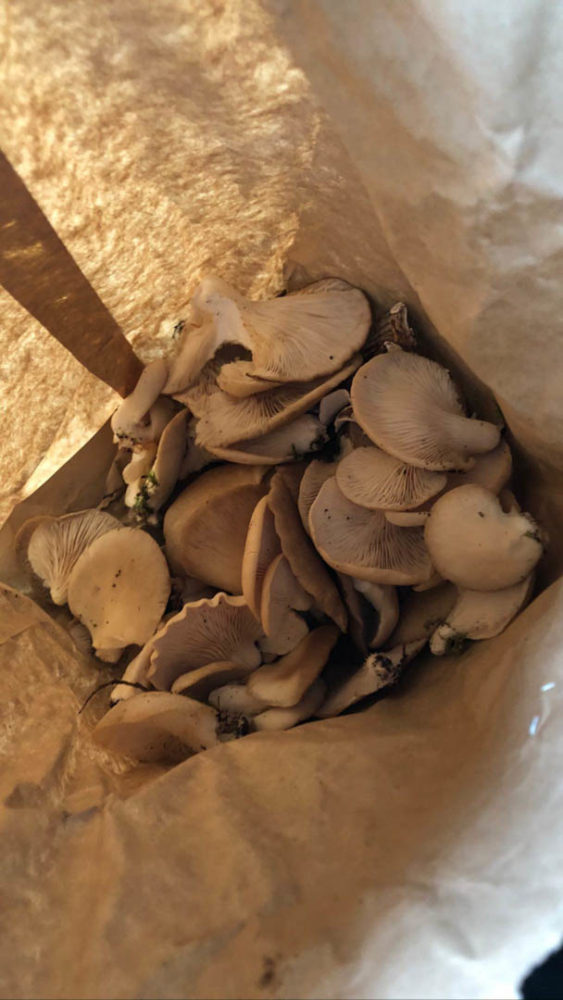 How do you know if you’ve picked too much?
How do you know if you’ve picked too much?
We’ve been doing good; we haven’t been stripping the trees. But also, the organism itself is within the tree. The mushroom is just the tip of the iceberg. It’s just the reproductive organ, and the actual organ is the mycelium, and that’s within the tree. So, this tree is fully colonized by the oysters.
We picked a few different healthy looking mushrooms, and continued on to look for another good patch.
Here is another tree with oysters too. Also, this is a good tree for licorice fern. It’s called licorice fern because the root was used in medicines, and it has kind of a sweet taste like licorice. So you take a little bite of the root and chew it up.
What’s the risk of someone getting poisoned by foraging?
Well, only if you fuck around with shit that you’re not totally sure on. You don’t want to do that. The golden rule with mushroom foraging especially is: when in doubt, throw it out. That’s the golden rule, because yeah, you could die. Especially if you’re dealing with the Amanita family because they have the most amount of deadly poisonous ones.
We parted ways each with a paper bag of oyster mushrooms, ready to be cooked for dinner.
Images: Andrea Sadowski/The Cascade
Andrea Sadowski is working towards her BA in Global Development Studies, with a minor in anthropology and Mennonite studies. When she's not sitting in front of her computer, Andrea enjoys climbing mountains, sleeping outside, cooking delicious plant-based food, talking to animals, and dismantling the patriarchy.

